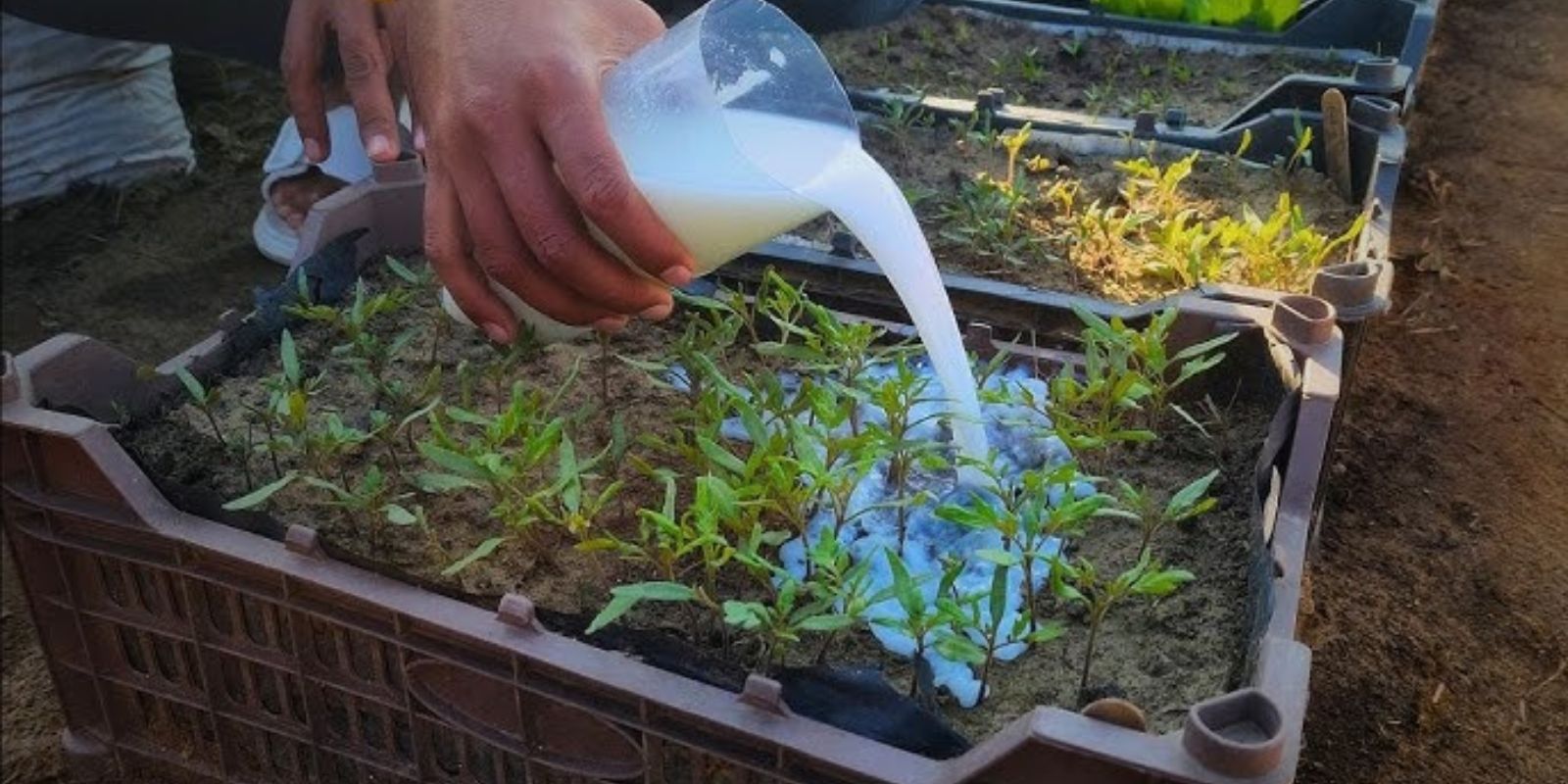Tomatoes are one of the most rewarding plants to grow in your garden. Whether you’re an experienced gardener or a beginner, the key to growing strong and healthy tomato plants starts at the seedling stage. If you provide tomato seedlings with the right nutrients, conditions, and care, they will grow faster, stronger, and yield an abundance of delicious fruits. In this guide, we’ll explore the most effective ways to supercharge your tomato seedlings for explosive growth.
1. Start with High-Quality Seeds
The first step to growing robust tomato seedlings is to choose high-quality seeds from reputable sources. Look for disease-resistant varieties suited to your climate and growing conditions. Heirloom, hybrid, and organic seeds all have their benefits, so pick the type that aligns with your gardening goals.
2. Use Nutrient-Rich, Well-Draining Soil
Soil is the foundation of your tomato seedlings’ health. Use a well-draining, nutrient-rich potting mix that is light and aerated. A good mix should contain:
- Peat moss or coconut coir for moisture retention
- Perlite or vermiculite for aeration
- Compost or worm castings for essential nutrients
- A balanced organic fertilizer for an added boost
This combination ensures your seedlings have access to oxygen, moisture, and the necessary nutrients for healthy growth.
3. Provide the Right Amount of Water
Tomato seedlings require consistent moisture, but overwatering can lead to root rot. Here’s how to water them effectively:
- Use a spray bottle or gentle watering can to keep the soil evenly moist.
- Water at the base of the seedlings to prevent fungal diseases.
- Avoid soaking the soil; let the top inch dry out slightly between waterings.
- If using trays, water from the bottom to encourage deep root growth.
4. Give Them Calcium for Strong Growth
Calcium is crucial for preventing blossom end rot and strengthening cell walls. Without enough calcium, seedlings can develop weak stems and suffer from deformities. Here’s how to add calcium naturally:
- Mix crushed eggshells into the soil before planting.
- Add bone meal or gypsum to provide slow-release calcium.
- Use diluted milk as a natural calcium supplement.
5. Feed with Organic Fertilizer
Seedlings need a balanced diet of nutrients, including nitrogen (N), phosphorus (P), and potassium (K). The best way to ensure they get what they need is through organic fertilizers:
- Compost Tea: A natural liquid fertilizer that provides essential microbes and nutrients.
- Fish Emulsion: A great nitrogen source that promotes leafy growth.
- Seaweed Extract: Boosts plant resilience and root development.
- Banana Peel Tea: Rich in potassium to encourage fruiting later on.
6. Use Epsom Salt for Magnesium
Magnesium is essential for chlorophyll production, which allows seedlings to produce energy through photosynthesis. To give your tomatoes a magnesium boost:
- Dissolve 1 tablespoon of Epsom salt in a gallon of water and use it as a foliar spray once a week.
- Sprinkle a small amount of Epsom salt in the soil before planting.
- Mix it with compost tea for an added nutrient punch.
7. Provide Ample Sunlight and Proper Temperature
Tomato seedlings thrive with at least 6-8 hours of direct sunlight per day. If growing indoors, use grow lights to supplement natural light. Keep the temperature between 65-75°F (18-24°C) for optimal growth. Sudden temperature fluctuations can stress young plants, so maintain a stable environment.
8. Harden Off Before Transplanting
Hardening off is the process of gradually introducing seedlings to outdoor conditions before transplanting them into the garden. This helps prevent transplant shock and strengthens their resistance to wind and sunlight. Here’s how to do it:
- Start by placing seedlings outside in a shaded area for 1-2 hours per day.
- Gradually increase the exposure to sunlight over a week.
- Reduce watering slightly to encourage stronger root development.
- Avoid transplanting on extremely hot or windy days.
9. Provide Support Early
Tomato plants are natural climbers and benefit from early support. Using stakes, cages, or trellises will:
- Keep the plants upright and prevent stems from breaking.
- Improve air circulation to reduce the risk of fungal diseases.
- Make it easier to manage and harvest fruits later on.
10. Protect Against Pests and Diseases
Seedlings are vulnerable to pests and diseases, so it’s essential to take preventive measures early on:
- Neem Oil Spray: Helps protect against aphids, spider mites, and fungal infections.
- Companion Planting: Grow basil, marigolds, or garlic nearby to repel pests naturally.
- Mulching: Keeps the soil moist and prevents soil-borne diseases from splashing onto leaves.
- Regular Inspection: Check for early signs of yellowing leaves, mold, or insect damage.
11. Prune for Maximum Growth
Pruning is a great way to direct energy toward healthy growth. Remove any weak or leggy stems, and pinch off lower leaves that may come in contact with the soil. This prevents disease and encourages a strong, bushy structure.
12. Use the Secret Ingredient: Compost Tea Booster
For an extra growth boost, many experienced gardeners swear by compost tea boosters. You can make your own by steeping compost, banana peels, eggshells, and a spoonful of molasses in water for 24 hours. This nutrient-dense liquid feeds your seedlings with beneficial microbes, making them stronger and more resilient.
Conclusion
Tomato seedlings thrive when given the right combination of nutrients, sunlight, water, and support. By implementing these simple yet powerful techniques, you’ll be setting your plants up for explosive growth and a bountiful harvest. Have you tried any of these tricks before? Let us know your favorite tomato-growing tips in the comments below! 🍅👇
#TomatoGrowing #GardeningHacks #OrganicGardening #GrowYourOwnFood #GreenThumb #VegetableGarden #GardenTips

